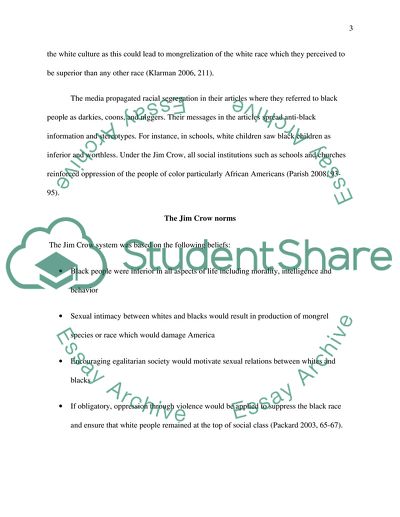Cite this document
(“Jim Crow Research Paper Example | Topics and Well Written Essays - 1000 words”, n.d.)
Jim Crow Research Paper Example | Topics and Well Written Essays - 1000 words. Retrieved from https://studentshare.org/history/1609599-jim-crow
Jim Crow Research Paper Example | Topics and Well Written Essays - 1000 words. Retrieved from https://studentshare.org/history/1609599-jim-crow
(Jim Crow Research Paper Example | Topics and Well Written Essays - 1000 Words)
Jim Crow Research Paper Example | Topics and Well Written Essays - 1000 Words. https://studentshare.org/history/1609599-jim-crow.
Jim Crow Research Paper Example | Topics and Well Written Essays - 1000 Words. https://studentshare.org/history/1609599-jim-crow.
“Jim Crow Research Paper Example | Topics and Well Written Essays - 1000 Words”, n.d. https://studentshare.org/history/1609599-jim-crow.


